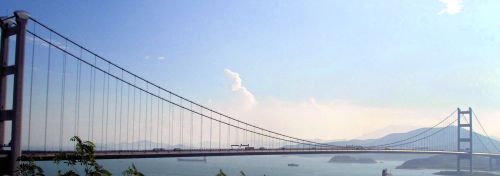Why are steel and stone bridges arched in opposite directions, one upward and one downward?
Why are steel and stone bridges arched in opposite directions, one upward and one downward?
LEE Boon-ying
Why are steel and stone bridges arched in opposite directions, one upward and one downward?
This is because stones and steel are made up of very different materials. Stones can withstand being pressed, but it is relatively easy to pull them apart. For this reason, stones are pressed together in an arched bridge. This makes stone bridges strong enough for people, cargoes and vehicles to cross.

Stone bridge
Steel is just the opposite. It is strong when under tension, i.e. when being pulled. The structure of a steel bridge is such that the steel cables are all arched upward so that they are constantly under tension. For this reason, people rarely build a steel bridge that is arched downward.

Tsing Ma Bridge (Photo: Courtesy of H.Y. Chiu)
Is this why concrete has to be pre-stressed?
Yes. Concrete is like stones it is strong when pressed.
Pre-stressed concrete is concrete with steel cables inside. These cables are under tension, i.e. being pulled, before the concrete hardens. The cables then want to contract, but they cannot. This way, the cables keep the concrete constantly compressed, while they themselves are still under tension. The opposite properties of concrete and steel are thus combined to make a building material which is stronger than reinforced concrete and cheaper than steel alone.
Pre-stressed concrete was developed in the 1950s and is recognized as one of the greatest advances in construction of the 20th century. It is widely used in many buildings.